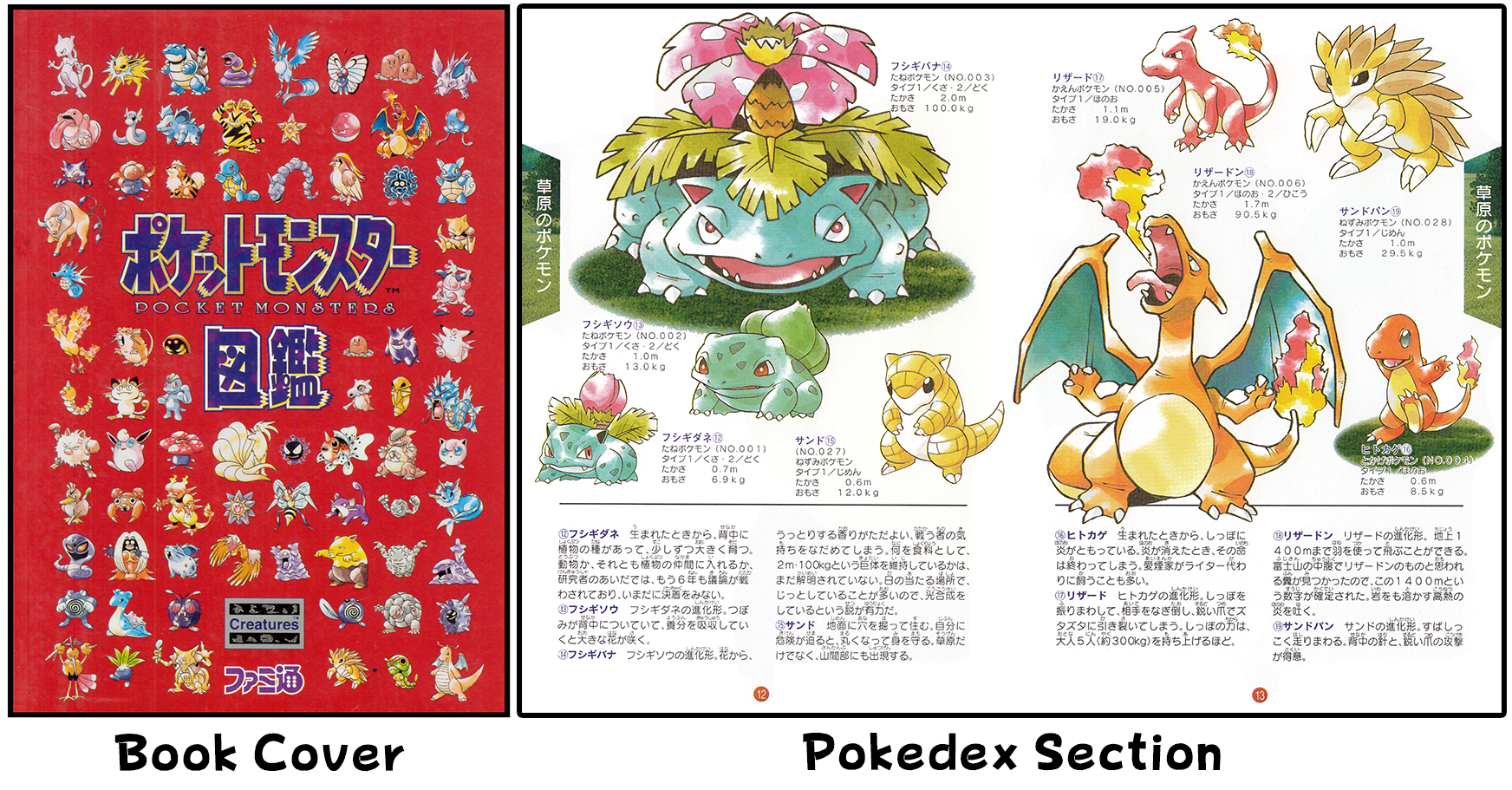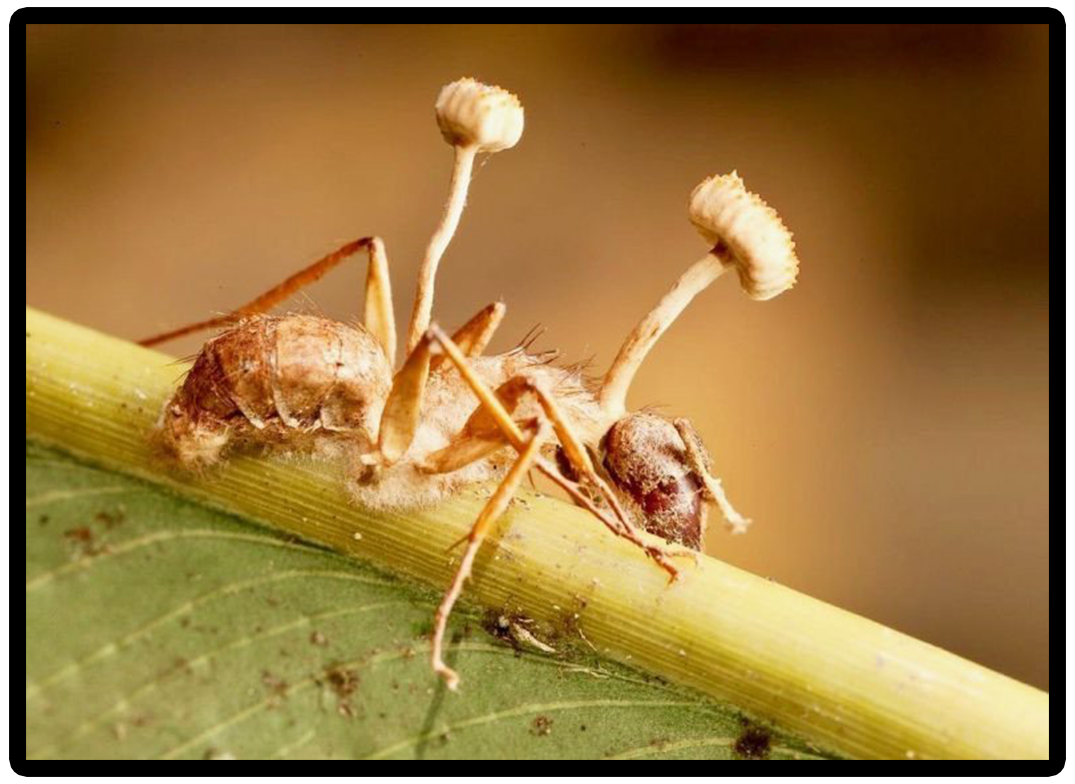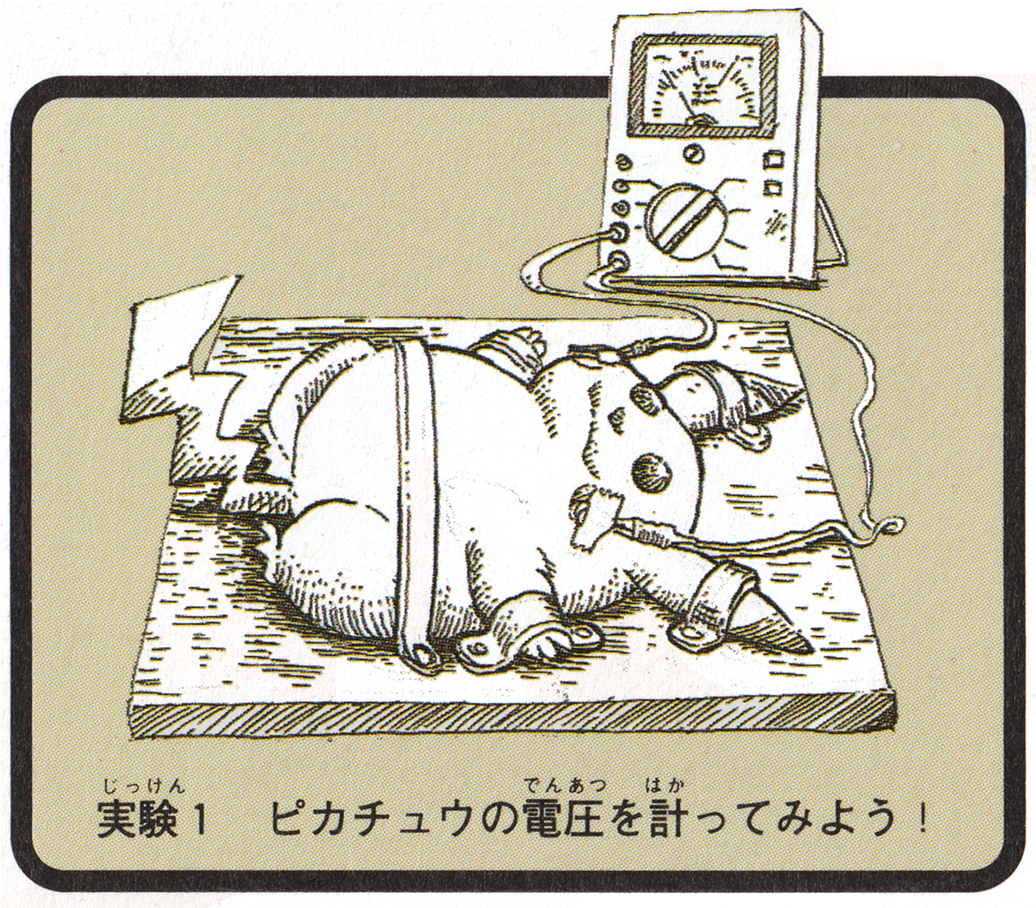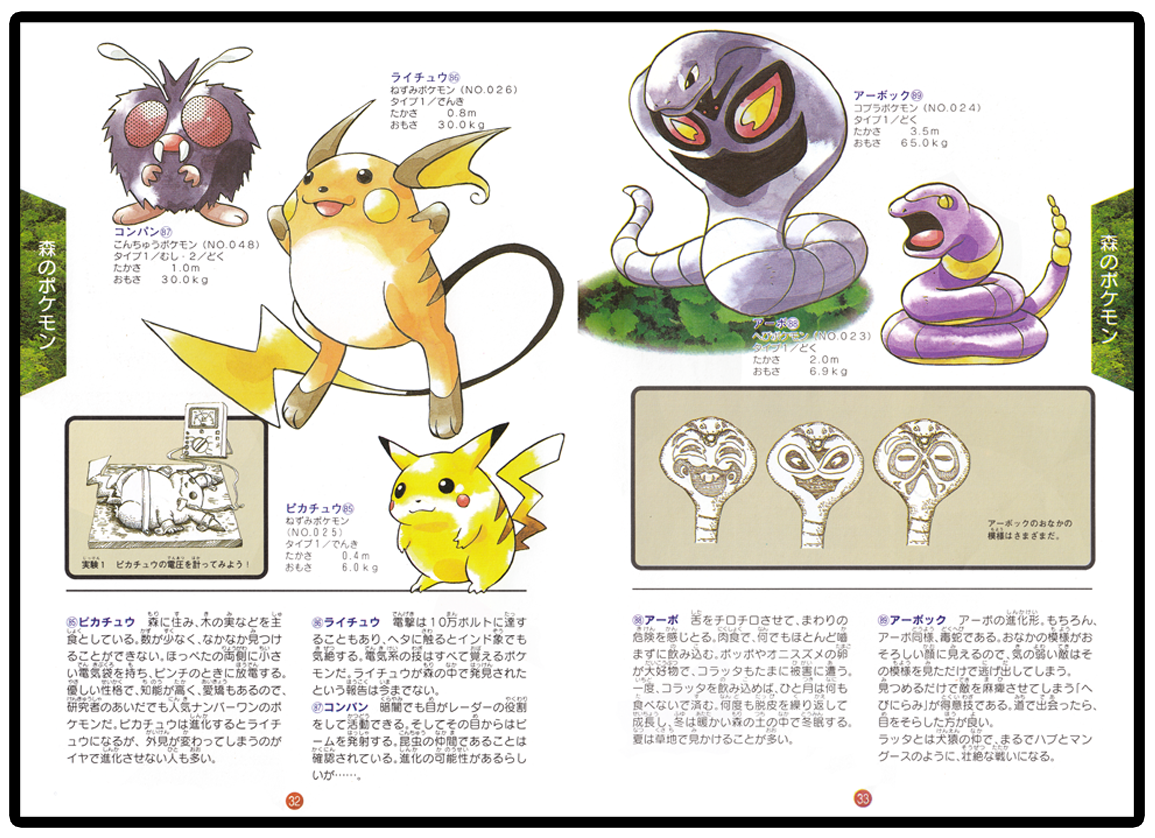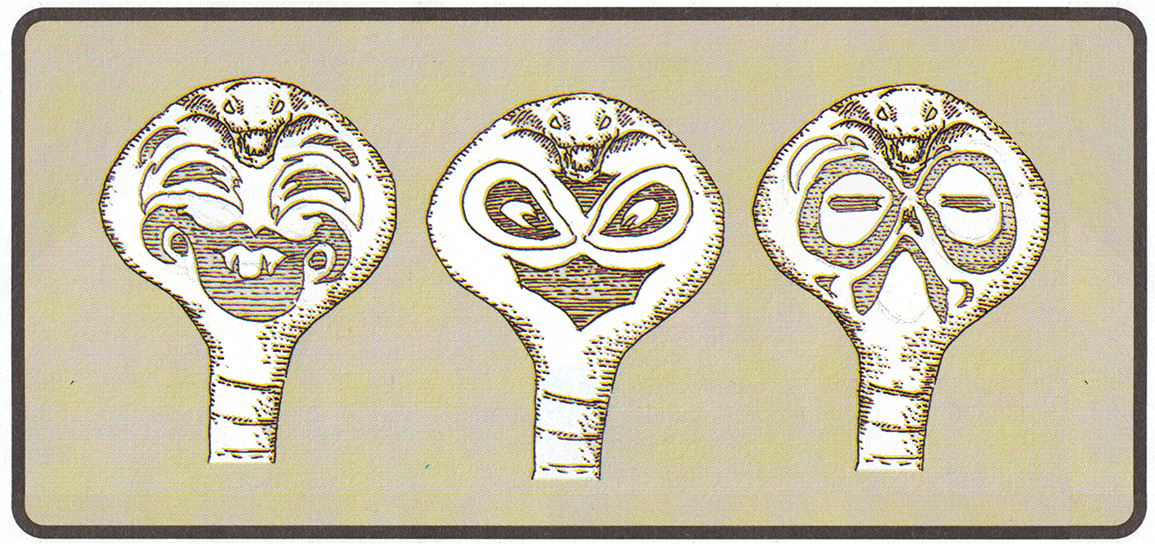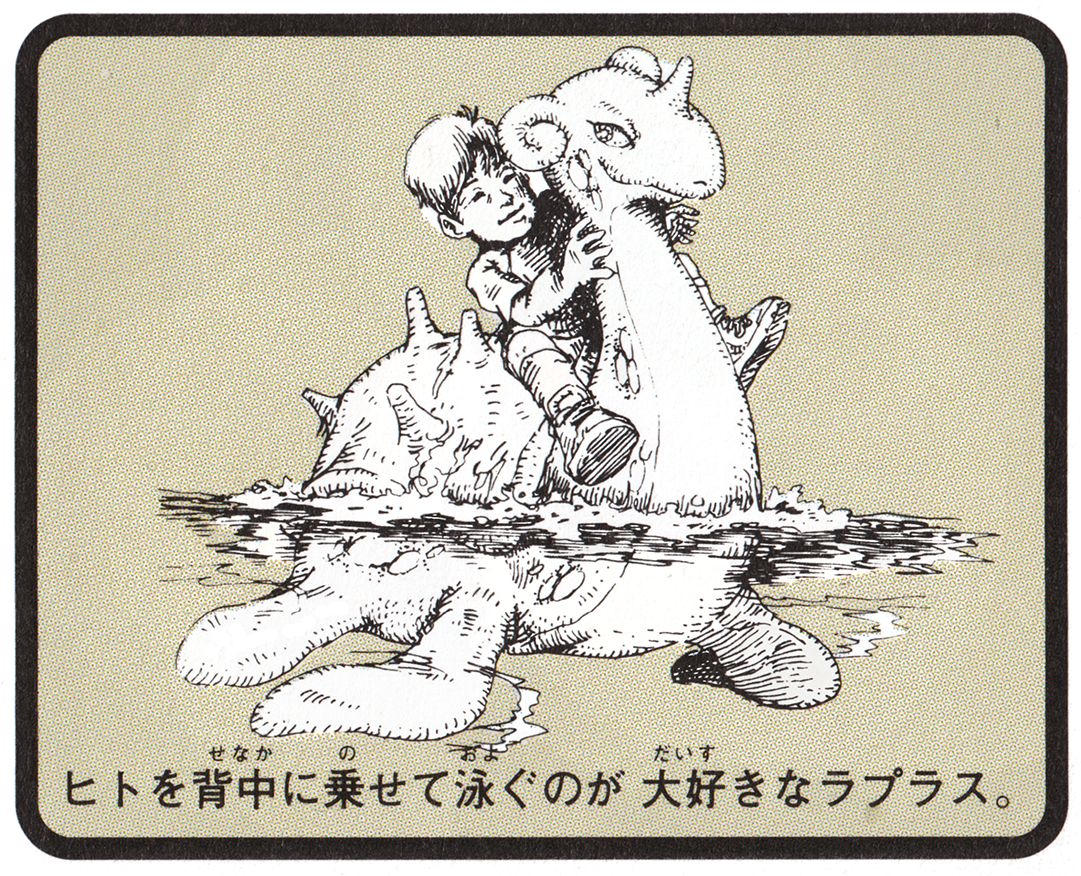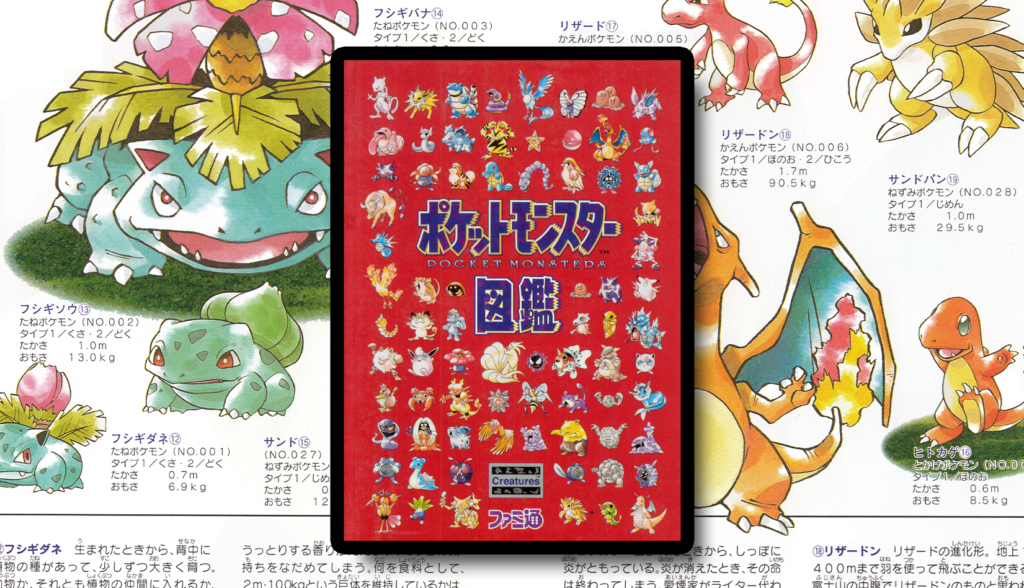
Translation: 1996 Pokédex Book (Part 5)
All 150 Pokédex entries and the introduction
Written by Dr Lava, June 17 2021
This is part 5 of 7 of this translation series. If you’d like to return to a previous part, click one of the links below. Or if you’d rather absorb this 47 page translation in video form rather than reading it through text, click here.
Skip to: Part 1 | 2 | 3 | 4 | 5 | 6 | 7 | Journal | Maps | Itoh Art | Interview | More
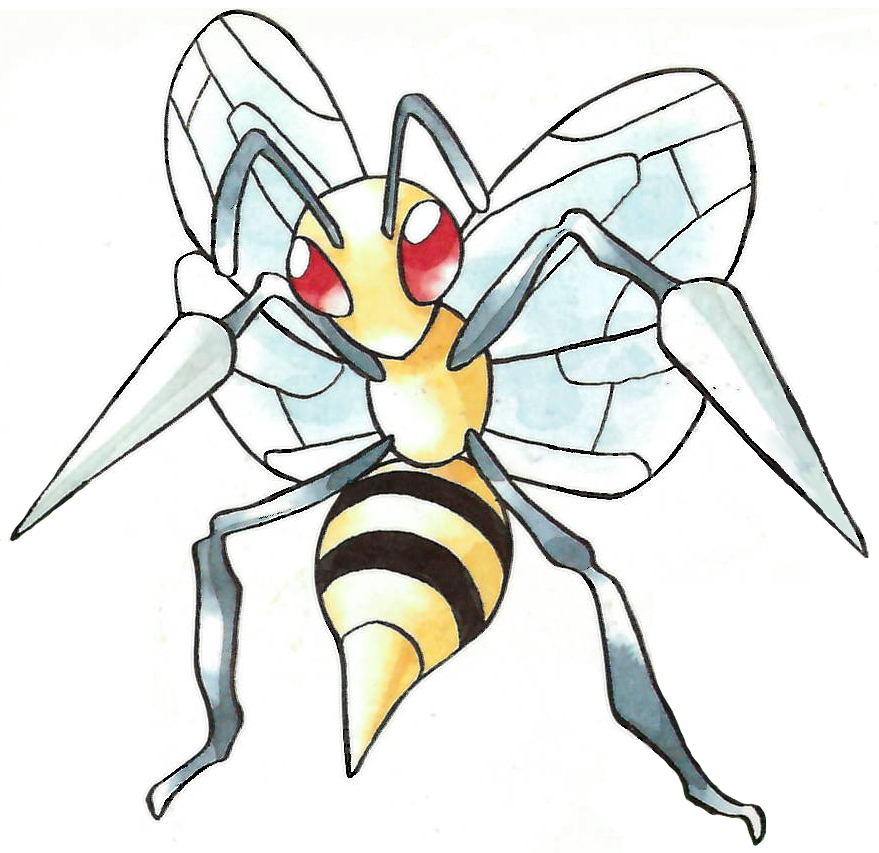
“#79 Beedrill: Kakuna’s evolution. They may appear in swarms. They buzz around at dizzying speed and jab repeatedly with the venomous stinger on their tail. When they grow and learn Twineedle, they become untouchable.”

“#80 Rattata: Their fangs are long, sharp, and continually grow throughout their life. They gnaw on hard objects to keep the ever-growing fangs workably short. They feast on nuts like walnuts and acorns. They also like processed food like cheese and milk.”
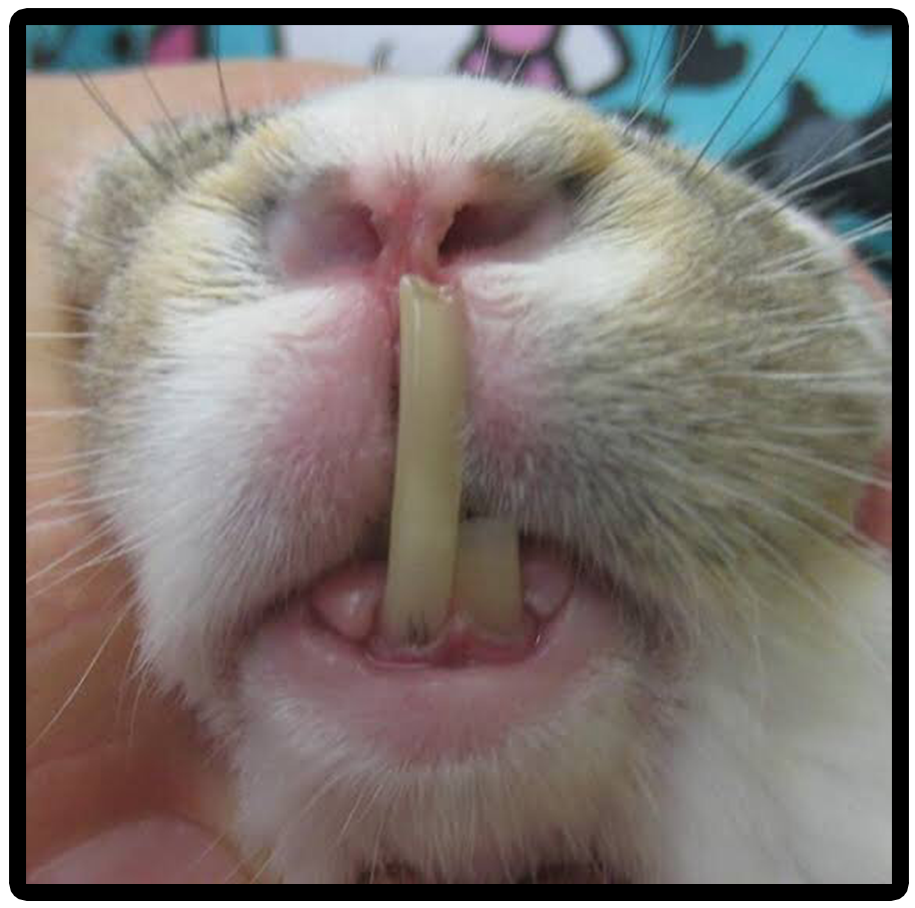
Dr Lava notes: Rattata have to gnaw on hard objects because just like real-life rodents, their teeth never stop growing. Left unchecked, rodent teeth grow so long they break through the roof of their mouths till they can’t eat anymore and eventually die of starvation.

“#81 Paras: Growing from the bug’s back are mushrooms called tochukaso. The mushrooms grow in step with the Pokémon. They live under fallen trees in forests. When they grow to a certain size, they move to grasslands and marshes.”

“#82 Parasect: They scatter toxic spores from the mushroom’s cap. In China, the spores are apparently used as ingredients of herbal medicine. Being Paras’ evolution, Parasect was included among the Pokémon of forests. However, they are almost impossible to find in forests.”
Dr Lava notes: Tochukaso are a real-world fungus that replace the host tissue and can affect the behavior of their insect host and even kill it. The fungus is extremely valuable in China where they’re believed to combat ailments like fatigue and even cancer, fetching high prices of more than a thousand dollars for a single kilogram. Tochukaso are also considered an aphrodisiac boosting sexual attraction and performance, and are so highly-prized that some people are literally willing to kill for them — like in 2011 when 19 Nepalese villagers were convicted of murdering a group of farmers in a fight over these fungal aphrodisiacs.

“#83 Venomoth: The wings are covered in powdery, toxic scales. With every flap of their wings, they scatter the scales in clouds. They are said to live in the Safari Zone. However, they are difficult to find due to their small population. Their larval and pupal stages are shrouded in mystery.”

“#84 Raticate: Rattata’s evolution. Their rear feet have three toes with small webs in between for swimming across rivers. In addition to nuts (naturally), they also feed on fish.”

“#85 Pikachu: They live in forests where they feed mainly on nuts. They are few in number and challenging to find. There are small electricity-storing pouches on each side of their cheeks that are discharged when endangered. Smart and charming with an affectionate nature, they are the most popular Pokémon among researchers. Pikachu evolve into Raichu, but many trainers prevent evolution because they don’t want their Pokémon to change appearance.”
Dr Lava notes: And here we get some pretty bizarre artwork showing Pikachu strapped down to a table while its voltage is measured through its cheeks. Remember you can click on any these Itoh artwork pieces for higher-resolution images and more information.

“#86 Raichu: Their electric strikes can reach 100,000 volts. Unwittingly touching them can cause even Indian elephants to faint. This Pokémon can learn all Electric-type moves. There have been no reports of Raichu sightings in forests.”

“#87 Venonat: Their eyes serve as radars that let them stay active in darkness. The eyes also emit beams of light. They have been confirmed to be a Bug type. They appear to have the potential for evolution, but it remains a mystery.”
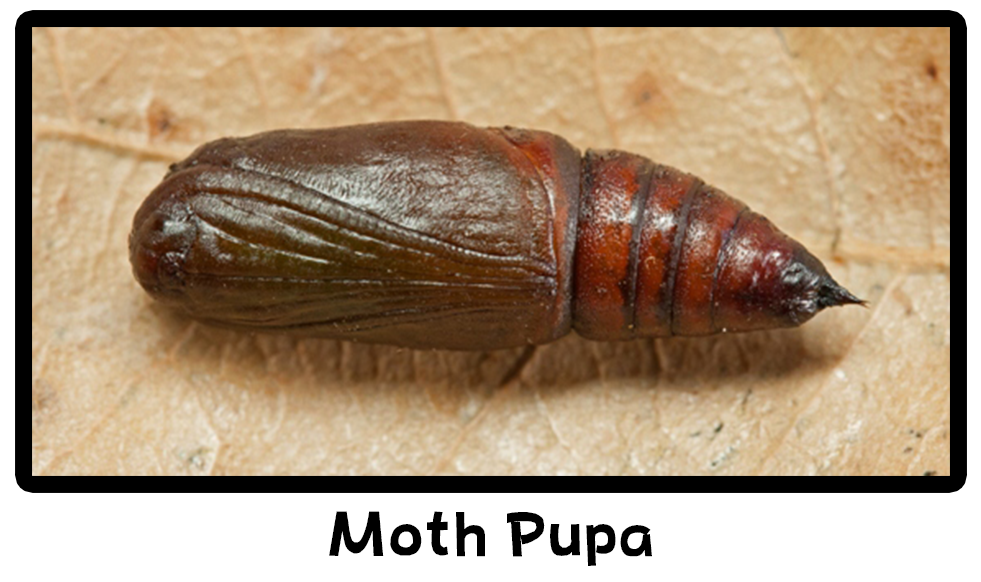
Dr Lava notes: Even though they live in the same habitat, this Pokedex breaks up several Pokemon families with its numbering system, in most cases probably for formatting purposes, like how Vulpix and Ninetales balance out the Nidoran pages. But the Venonat family isn’t just broken up, it’s presented out of order, with Venomoth’s entry saying its “larval and pupal stages are shrouded in mystery.” Venonat most resembles a real-life flea, but also bears some resemblance to venomous caterpillars that turn into moths, which makes Venonat the larval stage of Venomoth. But compared to real-life moths, they’re still missing a pupal form, which is probably why the Pokedex researchers haven’t figured out these two Pokemon are related.
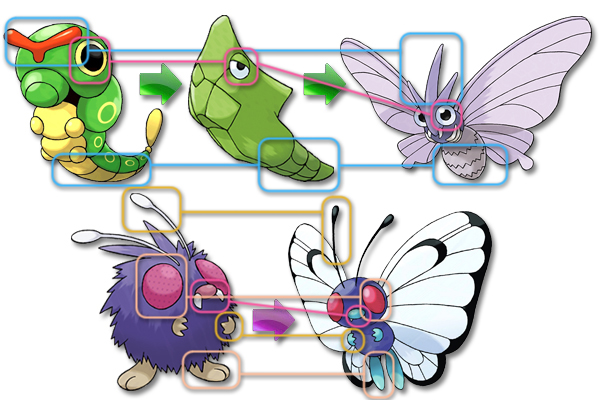
This Pokedex makes a few references to Gen 1’s development, so these entries could be referring to a scrapped middle stage. Or it could be hinting at a middle stage Game Freak was considering for Gen 2, the same way Poliwrath’s entry hints at a new frog evolution that became Politoed. There’s also a popular fan theory that because Butterfree and Venonat bear so many similarities, Butterfree and Venomoth might have been switched in development, similar to what happened with the Squirtle family — which if true, would explain where the pupal stage went. Unfortunately, all three theories suffer from a lack of evidence, so unless a future leak or developer interview shed some light on the situation, take it all with a huge grain of salt.

“#88 Ekans: They flick their tongue about to sense danger in their surroundings. This carnivore swallows all food whole with almost no chewing. They love the eggs of Pidgey and Spearow. Rattata are also preyed upon occasionally. If they swallow a Rattata, they can go without food again for a month. They grow by shedding repeatedly. In the winter, they hibernate in the warm soil of forests. In the summer, they are also common sights in grasslands.”

“#89 Arbok: Ekans’ evolution. Consequently, this Pokémon is also a venomous serpent. The markings on their belly have the appearance of a frightening face. Timid foes flee at the sight of such a “face.” They are skilled at using Glare that induces paralysis in their foe. If you encounter an Arbok on a path, you should avert your gaze. They are mortal enemies of Raticate. The two Pokémon fight viciously like a viper and a mongoose.”
Dr Lava notes: Interestingly, the rivalry between Arbok and Raticate didn’t see much action throughout the series, so the dynamic was eventually recreated for Seviper and Zangoose in Generation 3. On this page Benimaru Itoh provides some artwork showing a variety of Arbok belly patterns, which also appeared in the Pokemon Adventures manga where each pattern has a special strength, like boosted speed and attack stats. Arbok’s in-game Pokedex entries say it has different belly markings from area to area, and six variations have been confirmed. But unfortunately, the concept for Arbok having different designs in different areas was abandoned after Generation 2. Two designs appeared in the games’ first two generations, but instead of introducing more variations, all future games in the series just reused the first two over and over.
Pokemon of the Seas
“The sea-dwelling Pokémon retain attributes from ancient times. They do so because the underwater environments have not undergone major changes. The seas are also more amenable to life than on land, so there was little need for marine Pokémon to evolve. With some exceptions, there are no highly intelligent Pokémon in the seas.”

“#90 Gyarados: Extremely vicious and violent. They completely incinerate all matter with Hyper Beam fired from their mouth. They apparently live on the seafloor and in deep water. As a result, they are rarely seen. The most recent specimen was a corpse washed up on shore 35 years ago. They are omnivorous with fangs capable of crushing boulders. Their steel-hard scales can be fashioned into jewelry like rings. Such accessories command astonishing prices.”

“#91 Goldeen: The dorsal and ventral fins are built up like muscles. They help propel this Pokémon through water at a speed of 5 knots. Having little intelligence, they are known to unwittingly swim into a Gyarados’ mouth where they become an easy meal.”

“#92 Seaking: Goldeen’s evolution. Using their drill-like horn, they hollow out boulders to make their nest. They swim up rivers to spawn every year.”

“#93 Tentacool: From their crystal-clear eyes, they emit mysterious rays of light. They feed on plankton. Ninety-nine percent of their body is composed of water.”

“#94 Tentacruel: The eighty tentacles move about freely to ensnare prey like small fish. The tentacles also have venomous needles that induce poisoning and full-body paralysis. For those qualities, they are called ‘gangsters of the sea.'”
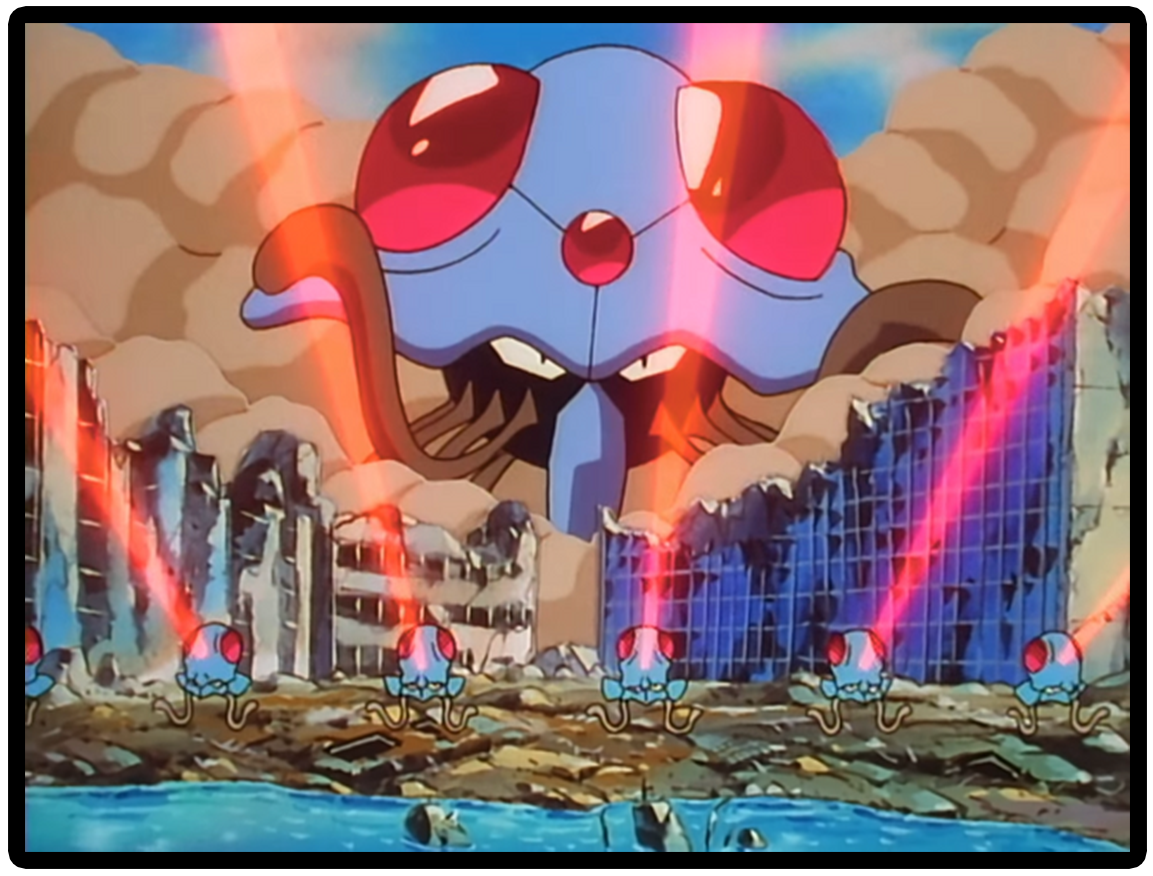
Dr Lava notes: This “gangsters of the sea” nickname was never used in any in-game Pokedex, but it was mentioned by Ash’s Pokedex in episode 19 of the anime — which just like Scyther and Electabuzz’s hatred of red, was presumably lifted directly from this Pokedex. In other words, even though this book is largely unknown outside Japan, it’s had a lasting and sometimes profound influence on the series since the very beginning.
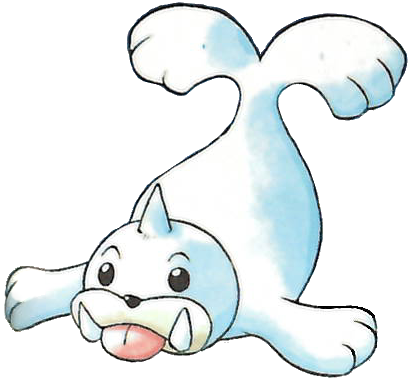
“#95 Seel: The light blue-haired hide is thick and tough. They remain active even in intense cold of -40 °C. They live in sea caves and the like. During the day, they often drift in the sea, probably searching for food.”

“#96 Dewgong: Seel’s evolution. They are cloaked entirely in pure-white hair. Their blubber reach an incredible thickness of 30 centimers. They are highly resistant to cold. In fact, they become more active when the temperature is falling.”

“#97 Lapras: Intelligent enough to understand human speech. Being placid in nature, they prefer to ferry people across water on their back rather than fight. Needless to say, they are skilled at using the move Surf. They can also learn a diverse mix of moves like Mist, Confuse Ray, and Hydro Pump. Little headway has been made in their study due to their small population. Some claim the turtle ridden by the folklore hero Taro Urashima was actually a Lapras.”
Dr Lava notes: Lapras’ design was clearly inspired by plesiosaurs and Scottish folklore’s Loch Ness Monster, but it also acquired some lore from the fairy tale about the Minogame that took Taro to Ryujin’s palace (discussed in-depth in entry #59). Ryujin itself also went on to inspire Lugia in Generation 2, but that’s a topic I already covered in a video dedicated to Lugia’s origins, so I won’t repeat it here. Alongside this Pokedex entry, the book provides this artwork of Lapras swimming with a boy on its back.
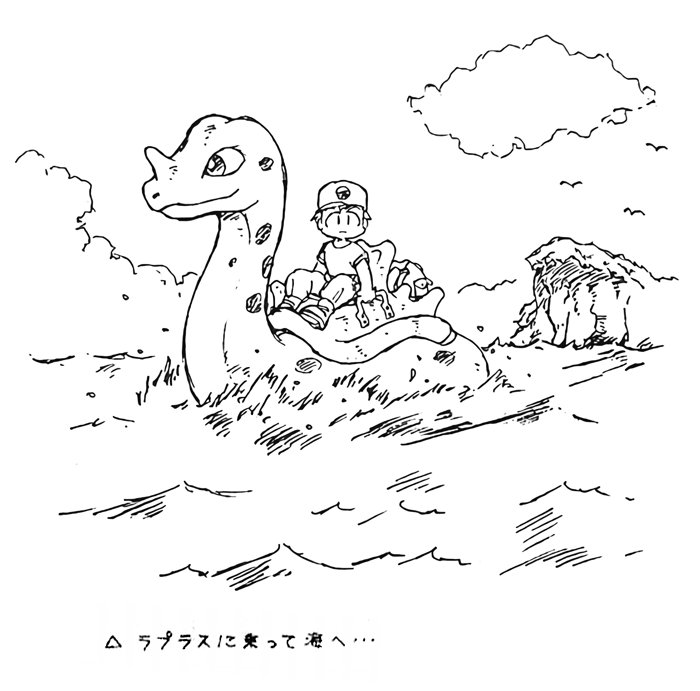
According to Ken Sugimori, Lapras was one of the first Pokemon ever created. It can be seen in some of the earliest Pokemon concept art, and in a July 2000 interview, he explained that originally Pokemon were created to serve specific functions — like Rhydon being used to carry things on land, Lapras for ferrying people across the ocean, and Clefairy being a cute pet.

“#98 Shellder: Encased within a shell that is harder than diamond. The body inside, however, is surprisingly tender. They are good with the move Clamp which squeezes the victim between the shell halves.”
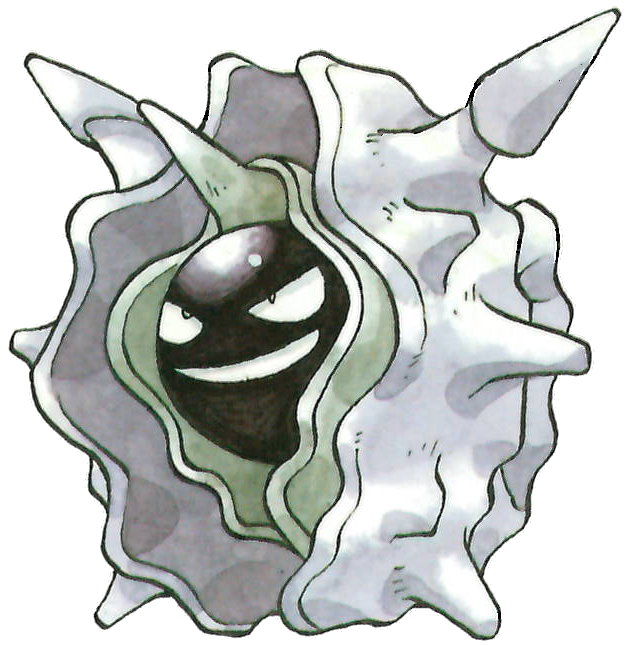
“#99 Cloyster: Said to be Shellder’s evolution. The shell is extremely durable. Even a direct hit from a napalm bomb can’t destroy it. The shell opens only when attacking. Their Spike Cannon – which repeatedly stabs the foe with spikes – is devastating.”
Dr Lava notes: This entry seems to imply that not only were napalm bombs were used in the Pokemon war hinted at in the games, but apparently someone actually witnessed a Cloyster surviving one of these napalm bombings. There are various hints scattered across the series referring to a recent war, like how Lt. Surge says Electric Pokemon saved him during the war, and a journal in the Vermillion Pokemon Center says he was a pilot back home in America. More conspiracy-theory minded fans also point to the fact Red’s dad is MIA, and Blue seemingly doesn’t have any parents at all. This entry’s reference to napalm bombs adds one more piece to the puzzle, as does Koffing’s entry (#119).

“#100 Poliwag: The slick black skin is thin and damp. A portion of their internal organs can be seen as a spiral. They can be categorized as relatives of tadpoles.”
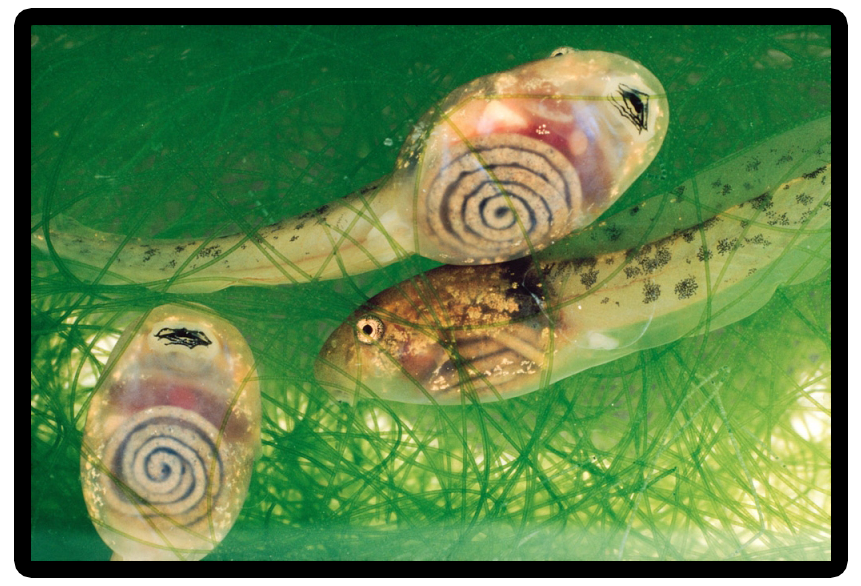
Dr Lava notes: Similiar to Vulpix’s entry saying they’re related to foxes, this entry’s telling us that Poliwag and tadpole evolved from a common ancestor, or possibly from one another. According to Satoshi Tajiri, the iconic swirl on Poliwag’s belly is modeled after the intestinal tracts of the tadpoles he fished for as a kid, which means the black swirl is actually poop travelling through its digestive system.

“#101 Poliwhirl: Poliwag’s evolution. While tadpoles grow into frogs, Poliwag remained in tadpole form and grew muscular to end up as Poliwhirl. While their legs are well developed for life on land, they appear to prefer life in water.”

Dr Lava notes: This page provides a diagram of Poliwhirl’s insides, provided to the Pokedex researchers by Professor Oak — which seems to imply he’s been dissecting frog Pokemon in his laboratory. If you’ve ever wondered how many toes Poliwhirl has or where it’s mouth is, here’s your answer.

“#102 Poliwrath: They are strong swimmers capable of multiple styles including the crawl and butterfly. Even Olympic swimmers are no match for their speed. However, it appears their muscles developed specifically for swimming as they are not fast at running. While they are thought to be Poliwhirl’s evolution, they remain in tadpole form. It remains to be seen if they will evolve further into frog form. Further research is awaited.”

Dr Lava notes: This reference to further evolution into a frog is a tease for Politoed’s introduction in Gold & Silver three and a half years later. Various leaks in recent years revealed several Politoed designs Game Freak came up with over the course of Gen 2’s development — so even though they knew there would be a new frog evolution in early 1996, they still hadn’t decided what it was actually gonna look like.
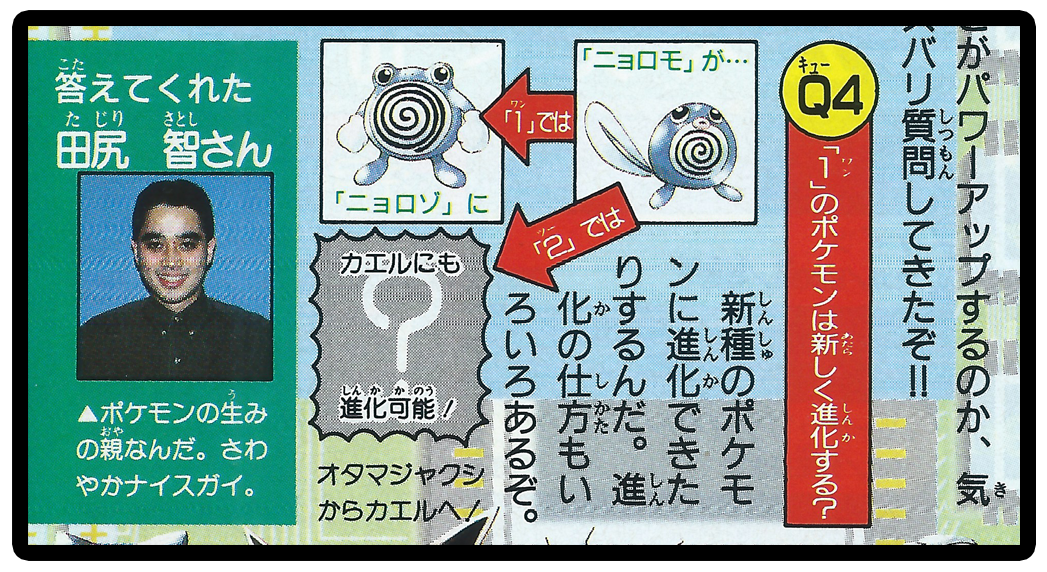
And they might not have decided how it would evolve either, as this entry makes it sound like Politoed will evolve from Poliwrath. A few months later, Tajiri sat down for an interview with Corocoro where it was hinted that Politoed would evolve directly from Poliwag. But of course in the final game, Politoed branched off from Poliwhirl when traded with a King’s Rock, an apparent reference to Poliwrath’s early design in Gen 1’s development that originally wore a crown on its head.
Skip to: Part 1 | 2 | 3 | 4 | 5 | 6 | 7 | Journal | Maps | Itoh Art | Interview | More
